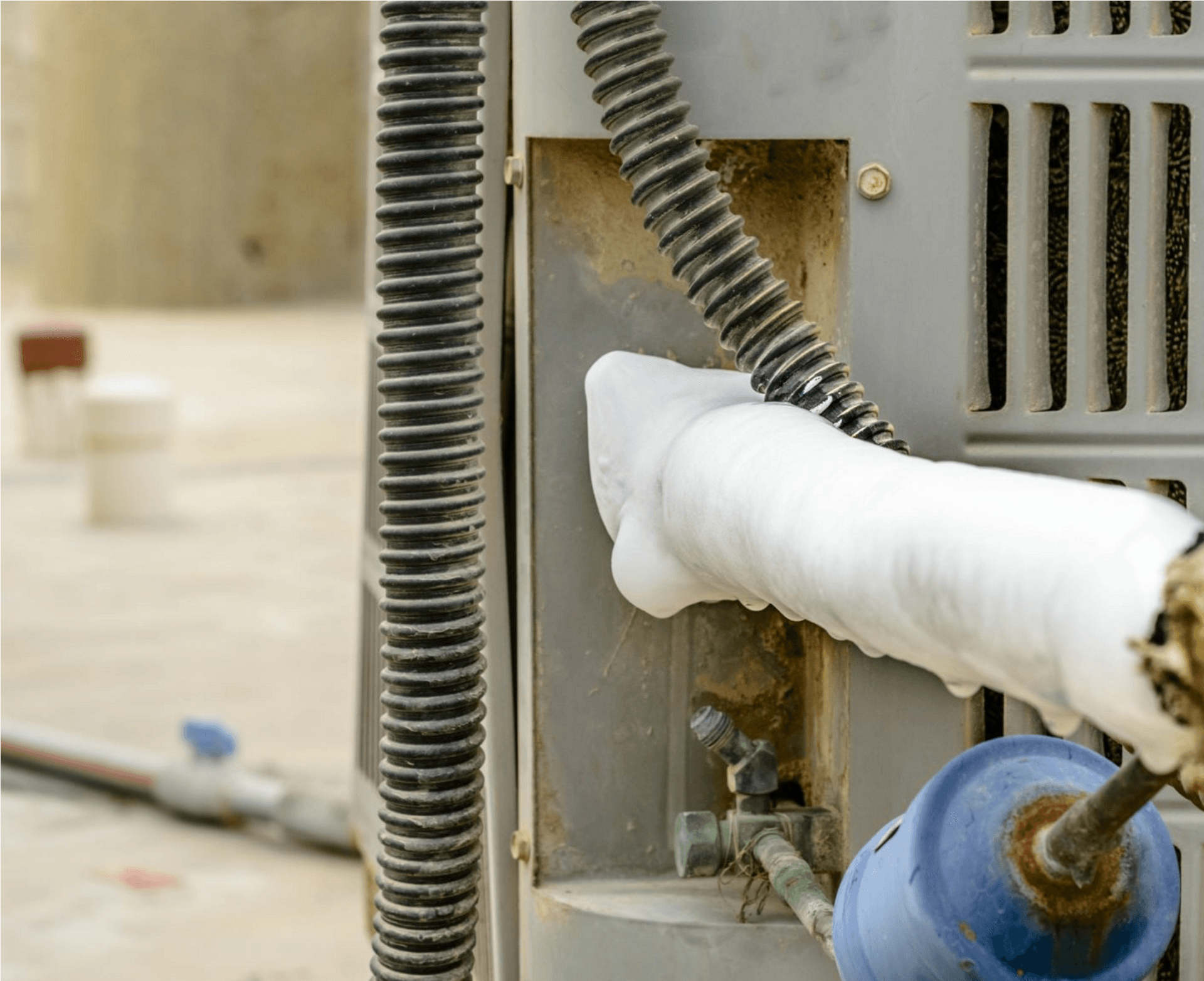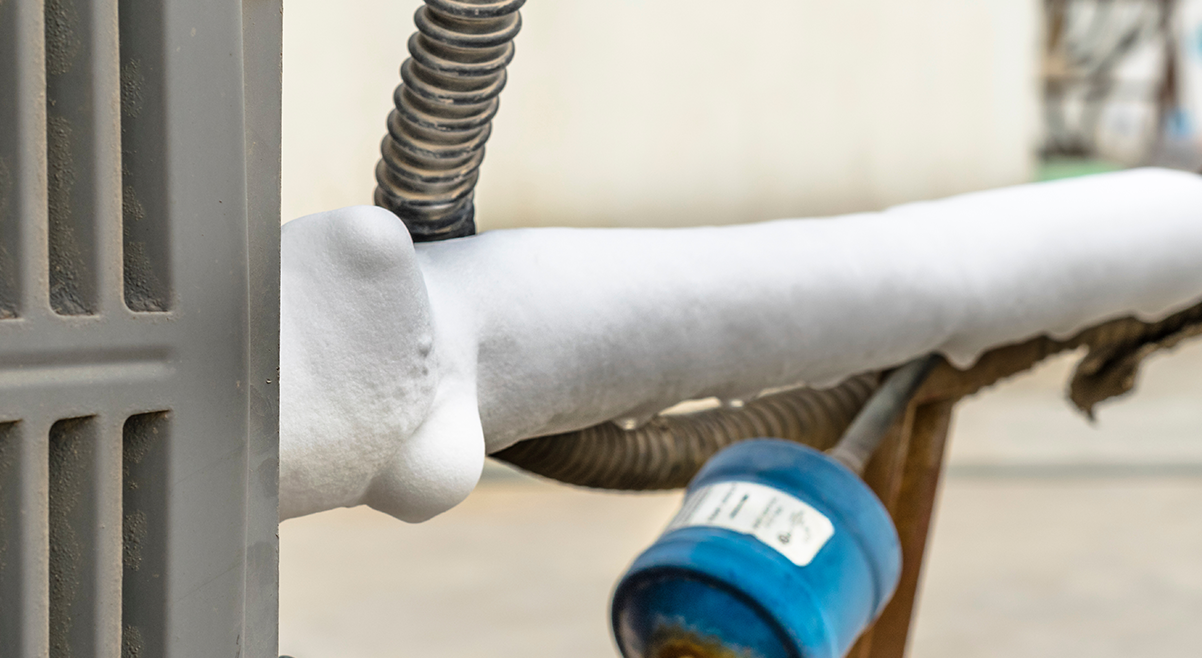My AC Pipe Is Frozen Solid - What Should I Do? Steps for Resolution
My AC Pipe Is Frozen Solid - What Should I Do? Steps for Resolution
Blog Article
Just how do you feel about What Do I Do If My AC Pipe Is Frozen?

Intro
Discovering that your air conditioning pipeline is iced up can be worrying, specifically throughout hot summer months when you depend on your air conditioning unit one of the most. Comprehending what to do in such a circumstance is important to stop additional damage to your cooling system and ensure your comfort indoors.
Recognizing the Causes
Numerous elements can add to the freezing of an air conditioner pipe. Comprehending these causes can help you resolve the problem efficiently.
Lack of Airflow
One usual root cause of a frozen AC pipeline is inadequate air flow. When the airflow over the evaporator coil is limited, it can trigger the coil to drop below freezing temperature, bring about ice formation on the pipe.
Reduced Refrigerant Levels
Inadequate refrigerant degrees in your air conditioning system can additionally lead to a frozen pipe. Reduced refrigerant degrees can trigger the pressure in the system to go down, resulting in the cold of wetness on the evaporator coil.
Winter Conditions
In cooler climates, freezing temperature levels outside can contribute to the freezing of a/c pipes. If your a/c unit is not effectively protected or if there are leaks in the ductwork, cool air can infiltrate the system, triggering the pipe to ice up.
Dirty Air Filters
Filthy or clogged up air filters can limit air movement in your a/c system, leading to numerous problems, consisting of a frozen pipeline. It's necessary to change or clean your air filterings system routinely to make sure correct air flow and prevent ice accumulation.
Indicators of a Frozen Air Conditioning Pipe
Acknowledging the indicators of a frozen AC pipe is critical for prompt activity.
Decreased Airflow
If you observe a significant decrease in air flow from your vents, it can indicate a frozen pipe.
Ice Buildup on the Pipe
Noticeable ice buildup on the cooling agent line or the evaporator coil is a clear indication of a frozen AC pipeline.
Weird Sounds from the Unit
Unusual audios, such as hissing or bubbling, originating from your a/c system can signal that there's ice present on the pipeline.
Immediate Actions to Take
When faced with a frozen AC pipe, it's important to act promptly to prevent additional damage to your cooling system.
Switching off the a/c
The primary step is to turn off your a/c to prevent the system from running and worsening the concern.
Checking for Blockages
Examine the location around the indoor unit for any obstructions that might be obstructing airflow, such as furniture or curtains.
Thawing the Pipe
You can make use of mild techniques like placing towels soaked in warm water around the icy pipeline to assist thaw it slowly.
Preventive Measures
Taking preventive measures can help stay clear of future events of an icy AC pipe.
Routine Maintenance Checks
Arrange normal upkeep talk to a specialist HVAC technician to make certain that your AC system is running efficiently.
Transforming Air Filters
Regularly replace or clean your air filters to stop airflow restrictions and keep optimum efficiency.
Insulating Exposed Pipes
If your AC pipelines are subjected to chilly temperatures, consider shielding them to avoid cold during winter season.
Seeking Professional Help
If DIY techniques fail to settle the concern or if you're uncertain about exactly how to proceed, it's ideal to seek assistance from a certified HVAC specialist.
When DIY Methods Fail
If your attempts to thaw the pipeline or address other concerns are unsuccessful, it's time to contact a professional.
Relevance of Hiring a Professional HVAC Technician
A licensed HVAC technician has the expertise and devices necessary to detect and fix concerns with your AC system safely and properly.
Conclusion
Handling a frozen a/c pipeline can be a frustrating experience, however knowing just how to respond can assist minimize damages and recover comfort to your home. By recognizing the causes, acknowledging the indicators, and taking timely activity, you can efficiently resolve the issue and stop future occurrences.
What to Do If Your AC Line Is Frozen
Make Sure All Supply and Return Air Vents Are Open
If you notice problems with airflow, the first thing you should do is check your supply and return vents. Supply vents distribute clean, conditioned air throughout your home. As this air becomes stale, it’s pulled into the return vent, where it’s reconditioned before being sent back out through the supply vent.
When these vents are closed, air won’t flow in the home. Before examining your AC, check the vents in every room and ensure they’re all open.
Check for a Dirty Air Filter
Another possible cause of limited airflow is a dirty air filter. Your air conditioner’s filters catch elements you don’t want to breathe in, such as dirt and dust. Over time, filters can become clogged, ultimately blocking air from flowing in and out. The lack of airflow can then cause the entire coil to freeze and will completely restrict any air from moving through it. The AC may need to be powered off for one to two days to allow the coil to thaw after replacing the filter to allow proper functioning of the unit. This debris can also accumulate on your AC’s evaporator coil, requiring a more serious repair. In general, air filters should be cleaned regularly (about every two weeks).
Assess Your Outdoor Unit
In addition to checking your AC, assessing the outdoor unit is a good idea. Also known as the condensing unit, it works with your interior unit to release heat outside. An issue with the outdoor unit can result in rising internal temperatures.
Overgrown Shrubs or Clogged Leaves
From leaves and twigs to shrubs and debris, there’s no shortage of outdoor elements that can accumulate around your condensing unit. When these elements get lodged inside the unit, they can block airflow. Fortunately, removing the blockage can solve the problem.
Sounds of a Broken Fan
Shrubs and leaves aren’t the only things that can impede your outdoor unit’s airflow. If the fan is broken, the unit won’t be able to properly get rid of heat — which means the internal temperature won’t go down. First, make sure the fan is spinning. If it is, check for the following sounds of a broken fan:
Buzzing Rattling Screeching Hissing Clicking Preventative Measures
Nobody wants to deal with a frozen AC line. In addition to causing problems with your air conditioner, they require professional repairs. On the bright side, there are preventative measures you can take to help ensure this issue doesn’t arise in the first place.
https://www.coopergreenteam.com/blog/what-to-do-if-ac-line-frozen

We had been made aware of that editorial on Have a Frozen AC Line? Here’s How to Fix It through someone on another domain. Liked our write up? Please share it. Let another person check it out. Thanks a bunch for your time. Kindly come visit our site back soon.
Call Today Report this page